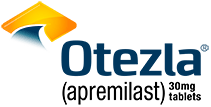First and only oral therapy approved for mild, moderate, and severe plaque psoriasis, and active PsA SEE THE DATA

Plaque Psoriasis
4 INDICATIONS Otezla® (apremilast) is indicated for the treatment of adult patients with plaque psoriasis who are candidates for phototherapy or systemic therapy. Read more
*Estimates of patients treated reflect global data since launch (Apr 2014-Mar 2023; US=59% of data). Calculations based on observed drug utilization parameters and number of units distributed. Utilization patterns change over time to best represent current markets.
FDA, U.S. Food and Drug Administration; PsA, psoriatic arthritis; TB, tuberculosis.
References: 1. Otezla [package insert]. Thousand Oaks, CA: Amgen Inc. 2. Data on file, Amgen Inc. 3. Otezla® (apremilast) FDA approval letter. March 21, 2014.


*In the planned hierarchical statistical testing sequence for ESTEEM, efficacy analyses preceding NAPSI were statistically significant, allowing for control of the overall type 1 error rate at 0.05 significance level in analysis of NAPSI. †In patients with nail psoriasis at baseline (NAPSI score ≥1; 66% [558/844]). 2,4


§§In patients with NAPSI score >0 at baseline. ***Analysis is exploratory and has not been adjusted for multiple comparisons. No conclusions of statistical or clinical significance can be drawn.
BID, twice daily; BL, baseline; BSA, body surface area; FAS, full analysis set; LOCF, last observation carried forward; ITT, intent to treat; NAPSI, Nail
Psoriasis Severity Index; PASI, Psoriasis Area and Severity Index; sPGA, static Physician Global Assessment.
Contraindications
Otezla® (apremilast) is contraindicated in patients with a known hypersensitivity to apremilast or to any of the excipients in the formulationWarnings and Precautions
Hypersensitivity reactions, including angioedema and anaphylaxis, have been reported during postmarketing surveillance. If signs or symptoms of serious hypersensitivity reactions occur, discontinue Otezla and institute appropriate therapyContraindications
Warnings and Precautions
Adverse Reactions
Use in Specific Populations
Otezla is indicated for the treatment of:
Please click here for the full Prescribing Information.
References: 1. Aldredge LM, Higham RC. JDNA. 2018;10(4):189-197. 2. Papp K, Reich K, Leonardi CL, et al. J Am Acad Dermatol. 2015;73(1):37-49.
3. Otezla [package insert]. Thousand Oaks, CA: Amgen Inc.
4. Data on file, Amgen; 2013. 5. Stein Gold L, Papp K, Pariser D, et al. J Am Acad Dermatol. 2022;86(1):77-85.